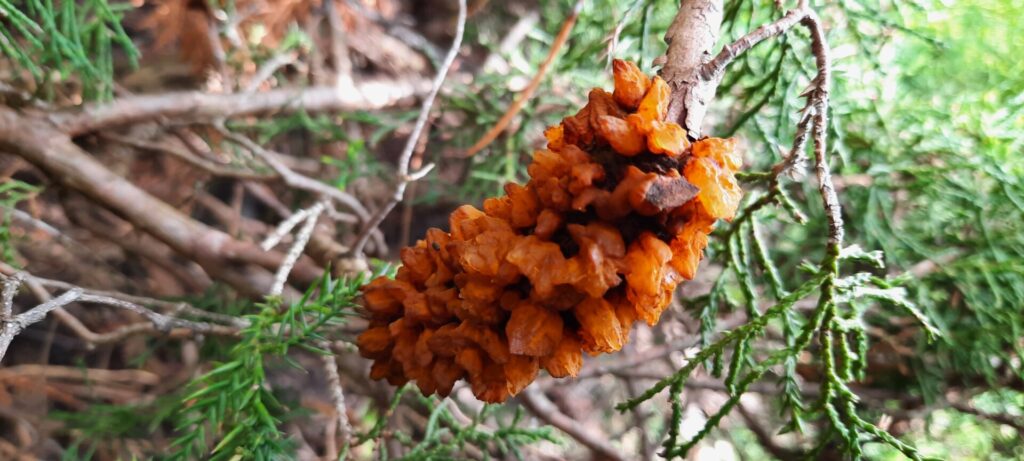
Hello I am hoping to get help with 2 trees In my garden in Toronto
Over the last few years I started noticing a fungus growing on the branches of what I think is a juniper like/small cedar. It grows on the branches and more or less choke the branch and the branch dies . When I noticed it early I can scrap the fungus so it stops growing and it seems to help a bit. It is definitely worst when it is raining a lot so last year was really bad.. I have attached a picture of the fungus
However there is another issue is that I have a crab apple tree next to it and for over 5 years that poor thing starts losing his leaves right after the flowering season.. we went to a nursery who told us the ground was properly too wet so I removed diligently leaves around it. We also were given a spray to try one year but does not make a lot of difference
So decided to do a bit of research and… found out that it is likely related to the fungus on the juniper. Apparently if you have cedar rust then the spores fly and affect crab apple trees nearby and in that case the two are really close.
I read I could spray the juniper early spring to avoid the fungus growth and male the crab apple tree happy so went to the nursery but they seem to be puzzled on what to use
Any suggestions would be greatly appreciated
Thanks in advance
Thank you for contacting Toronto Master Gardeners.
As you stated, it does seem to be Gymnosporangium juniperi-virginianae: This is a fungus that does not destroy plants but it does diminish their ornamental value and the tree’s ability to obtain sunlight and nutrients. Your evergreen is a primary host, where the spores travelled to your crab apple affecting the new leaves. Other affected shrubs and small trees are: Apple trees, Hawthorns, Mountain Ashes and Serviceberries.
The rust’s spores/galls you see, develop on young branches of the cedar in late fall. As the spring showers begin, the galls grow and release spores, which infect your crabapple. Good you contacted us early in the year. There is something that can be done. Our suggestion is to cut out the infected areas, make sure you disinfect any equipment used to prune your trees and shrubs before and after the pruning. Please do not dispose of cut branches in your compost or City compost to avoid further spread. In the late summer, eliminate infected leaves and fruit from around your tree so that they do not infect the cedar in exchange. Maintaining your crab apple in good health and stress free will also help combat rust.
The following websites provide information about the apple-cedar rust, how it works, and how to control it, culturally and organically:
Good luck with the spring pruning and cleaning.

